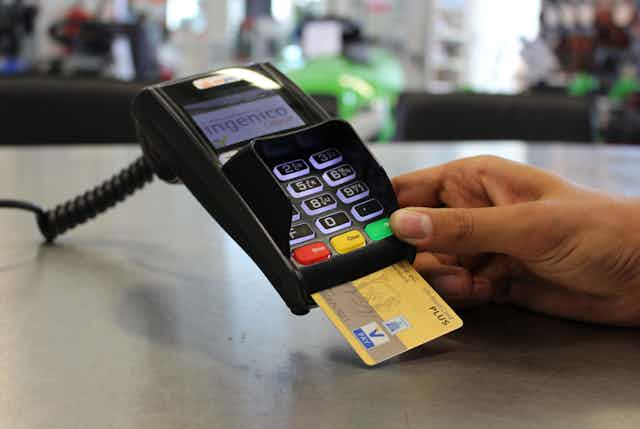“Would you like to round up the value of your purchases to the nearest euro, to support a charity?” Recently many shoppers have had to respond yes or no to this question at the till, in aid of Ukrainians, victims of the earthquake in Eastern Turkey/Syria, or for the “Small Change” (Pièces Jaunes) campaign for children in hospital.
The sums – a few euro-cents when you’re at the till – may seem derisory. However the act of microdonation (or rounding up your bill, or gifts to ‘check-out charities’, as they’re called in the English-speaking world) is becoming increasingly common among retail brands who see it as a way to boost their reputation. This form of giving has enabled more than €50 million to be collected in France since 2010.
Some customers find this an easy and painless way to support a charity. However, asking us to donate on each journey to the till can end up aggravating. Instead of an opportunity to show generosity, it can become a cause for embarrassment, guilt or indeed bad temper when the shopper has to say no out loud.
I don’t have any money!
If you experience these types of sentiments when you’re asked for a check-out donation, rest assured you’re not alone. In the US the phenomenon is so well known that a character in the cartoon South Park hits out at being solicited, and mentions of ‘Stop Asking Me to Donate’ spread over Twitter.
Following up on a study suggesting there are optimum conditions for attracting check-out donations – making the ask via an electronic payment terminal rather than face-to-face, in a specialist chain store, particularly in the sports and leisure sector, with a big geographical catchment – I led a Twitter analysis to understand not why people give but rather, why they refuse to do so. In this way, one can find evidence of three different causes of annoyance associated with asking for money at the till.
The first is over-solicitation. Due to the multiple channels through which people are asked to give – over e-mail, by telephone, in person, by mail, at the check-out etc – and places where they are asked (in the street, through their letterbox, at work, while they’re shopping, etc.) potential donors suffer from a lack of tailoring, as they’re deluged by causes that rarely interest them. In this scenario, the appeal for donations at the till is like another droplet in a water torture regime designed to drive the victim mad. A Tweet illustrates this sense of exasperation:

Secondly, fed-up donors pan the lack of reciprocity in the arrangement: why should we give, when the store doesn’t? In our study, looking at 706 Tweets, businesses which ask for charity donations are accused of acting selfishly in 61% of cases, compared to just 11.8% when it’s the charity itself asking for money.


Finally, annoyed shoppers question the legitimacy of chains fundraising on charities’ behalf. Customers can sometimes find it hard to tell the difference between a brand’s sincere support for a cause, and reputation laundering. Often this leads them to want to know where the donated money is going.
Contrary to certain assumptions, however, businesses that donate the extra pennies from rounding up the value of purchases don’t get a cut from this. Thanks to a feature installed in payment terminals by fintech social enterprise MicroDON (or by banks that have invested in microdonation technology, such as France’s Banque Populaire), the money given by consumers is directed in a transparent manner toward chosen charities. In France, for amounts over 5 euros per store per year, customers can even exercise their right to tax exemptions.
By examining the downsides of asking for money donations, it allows us to better understand how to adapt charity gift campaigns to avoid wearing out donors’ generosity. In fact, chains and charities should take into consideration customers who don’t see rounding up the value of purchases for charity donations in a positive light.
On the one hand, “irritated customers” sense a kind of illegitimacy in a chain associating itself with their gift, which could damage the brand’s image in their eyes and their desire to go back there. On the other, “annoyed donors,” tired of being solicited to give money wherever they go, by multiple means, without a message tailored to them, might just give up on charity appeals.
This study, which set out to improve the experience of charity giving, could lead us to pose the following question: at the end of the day, why should we give at all? Why aren’t the extra pennies on your bill at the till just seen as a marketing tool like so many others, a weak or effective one depending on the store? One answer to this is that generosity is associated with so many virtues, for wider society but also for oneself. The act of giving evidently gives you a warm glow inside, reducing stress and the risk of heart attack, and enables you, as promoters of charity giving would be keen to claim, to better appreciate life. Nothing less than that!
This article was translated from French by Joshua Neicho.


